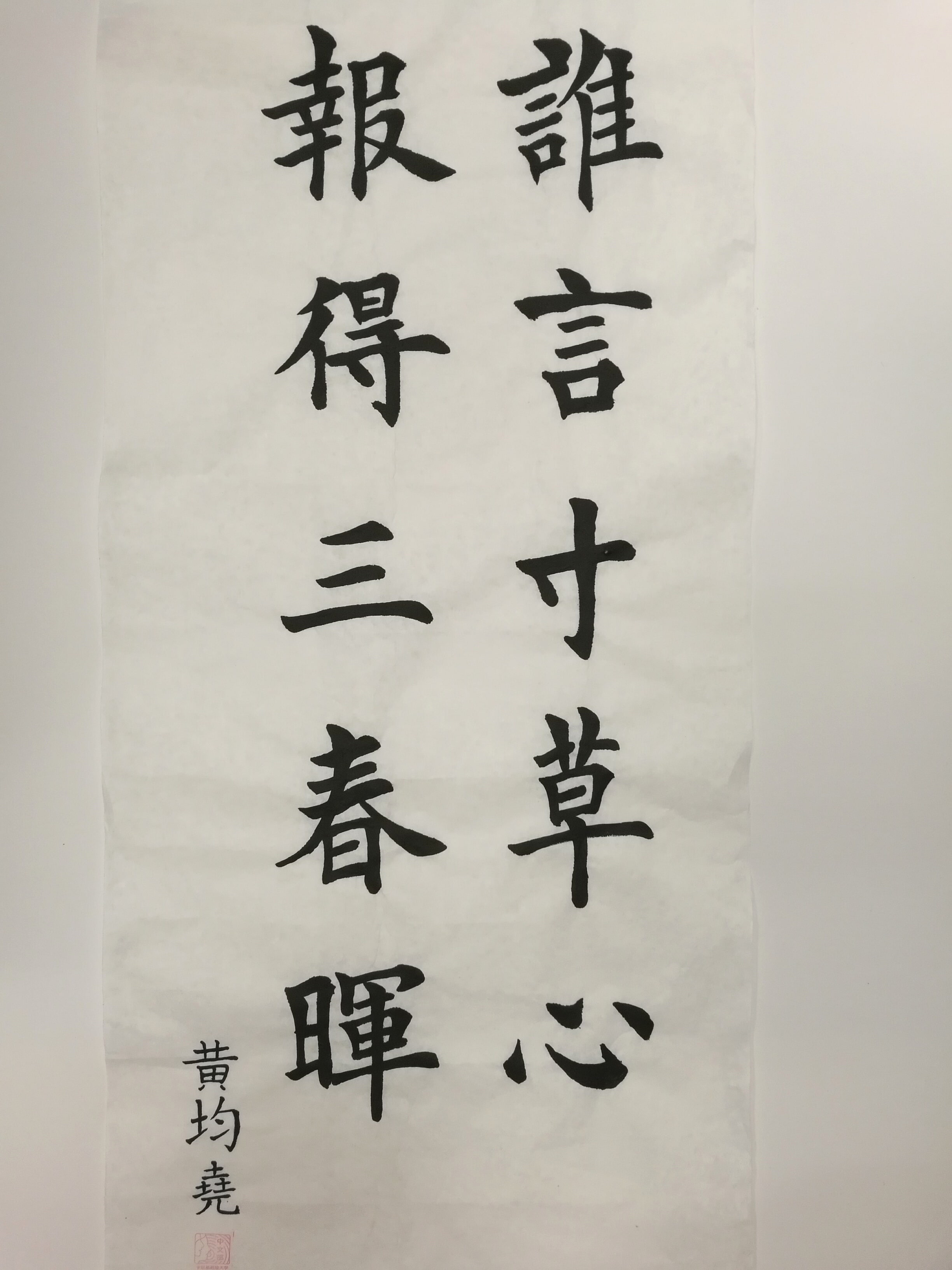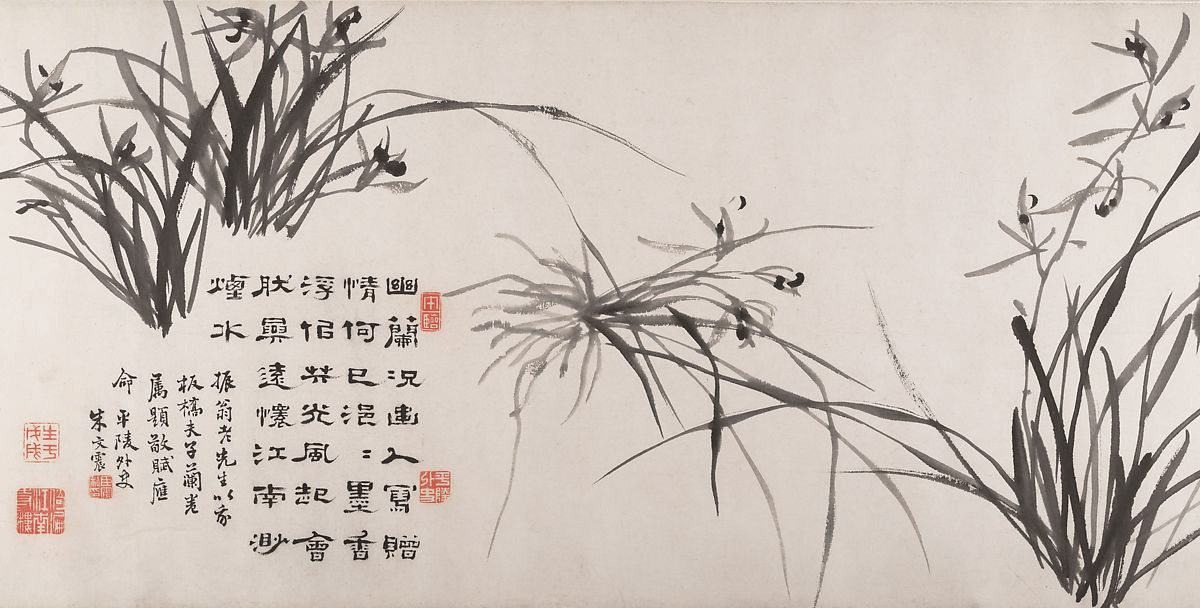The Heart of Inch-high Grass – A Calligraphy and Reflection
Thomas Wong
Carnegie Mellon University – Chinese Studies
Calligraphy

Calligraphy by Thomas Wong
Who would say that the heart of inch-high grass;
could repay the sunshine of deepest spring?
Self-Reflection Essay
Motivation
I originally took this class for multiple reasons including personal self-expression, cultural reconnection, and to make a present for my grandparents. Lately I’ve been feeling a need for an artistic outlet and calligraphy seemed like an interesting and unique way to create art. I had little idea of the skills it would require, but I knew that patience would be one of them and I appreciated the idea of using calligraphy as a meditative experience as well. I have a limited knowledge of Chinese history and I hoped I would learn something about the thousands of years of Chinese culture that I’ve seen depicted in fragments in Chinese TV and film. As a child, I attended Chinese school for a few years and part of that education involved introductory calligraphy. My grandfather was a teacher in China and he tried to teach me some things but I was never able to get it. I thought if I took this class and made a piece for him, that would make him happy.
Peer Learning
The piece I shared is a simple depiction of Orchids and Bamboo by Zheng Xie. He had originally inscribed it with a poem on the left dedicated to a friend, who was then inspired to inscribe it himself along with three other friends. The piece was painted when Zheng Xie was 50 years old and newly appointed to a government position in Northern China. Having risen from poverty via the civil service exam, he was a very down-to-earth man with a strong character and refused to play political games to gain favor with the upper ranks. The orchids and bamboo symbolize this inner strength and virtuous nature as well as express desire to “retreat into nature,” representative of literati ideals. This also represents Zheng Xie’s personal experience with politics. In particular, after facing criticism for his initiatives to benefit the poor, he resigned and left politics to live as a calligrapher and artist. This juxtaposition of a wistful desire to live a virtuous life and presence of close friends with the environment of political sleaze lends a bittersweet atmosphere to the work.

Artist: Zheng Xie, Chinese, 1693–1765,
Period: Qing Dynasty (1636-1912)
Medium: Handscroll; Ink on paper,
Museum Collection: The Metropolitan Museum of Art, New York
Link: https://www.metmuseum.org/art/collection/search/49244
Self-reflection
Over the course of the semester I’ve learned a lot about how to appreciate calligraphy. The poetry behind how strokes are made and characters are drawn hold a lot of meaning and influence or accentuate the interpretation of each piece. The control behind each aspect of a single movement has to be entirely intentional in order to produce the intended outcome. The shape, thickness, darkness, spacing, and intensity of each stroke can vary significantly and each aspect has its own effect on the final character and piece. I’ve also learned a lot about the patience required to take care in art. The permanence of the slightest touch of ink on paper lends a lot of weight to each action taken in calligraphy. Going slowly and attentively will benefit the end result. Taking care in making sure the tip of the brush is ready for each stroke gives you the most control possible. In this class, I most enjoy the time that we take to practice. I enjoy absorbing myself in the experience of writing calligraphy.